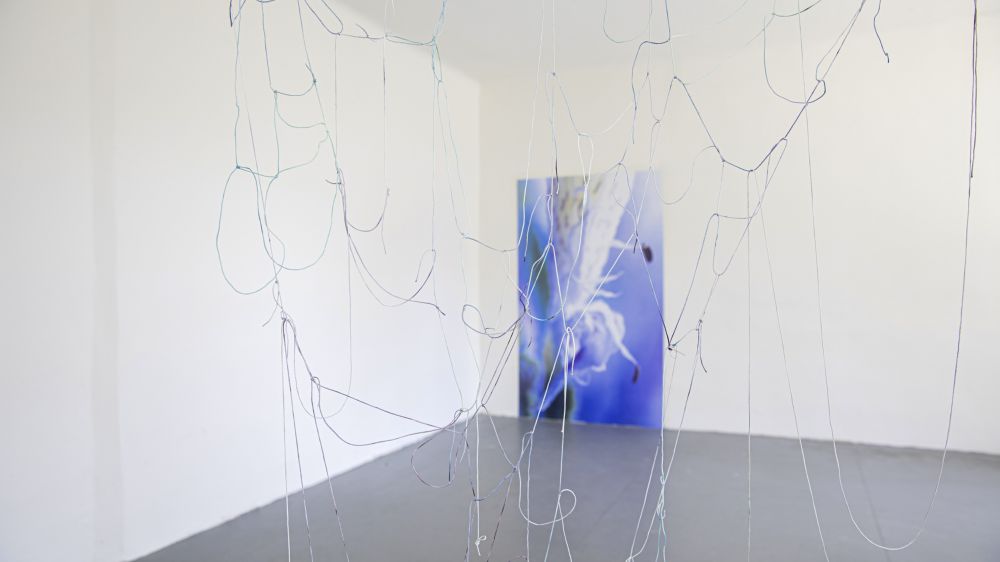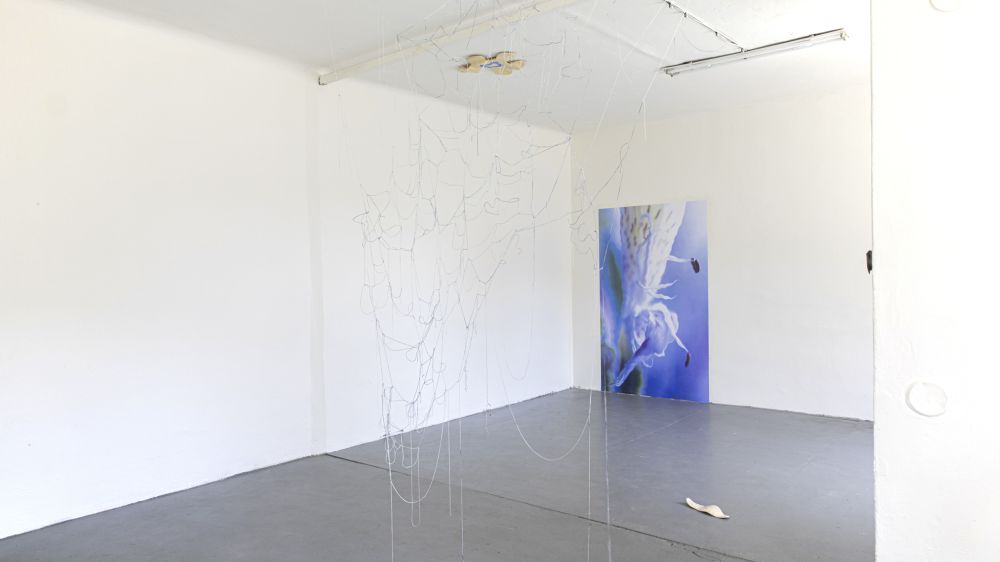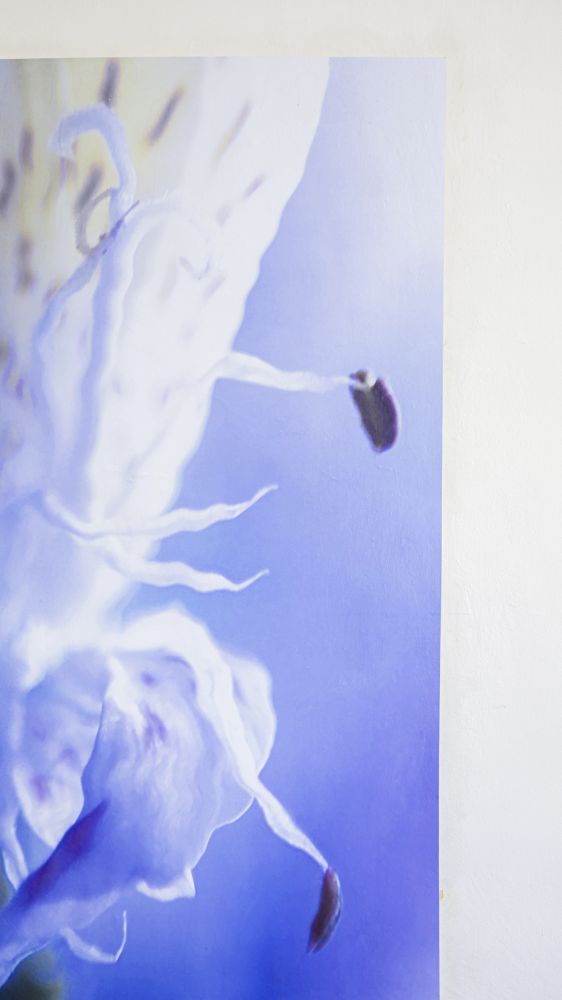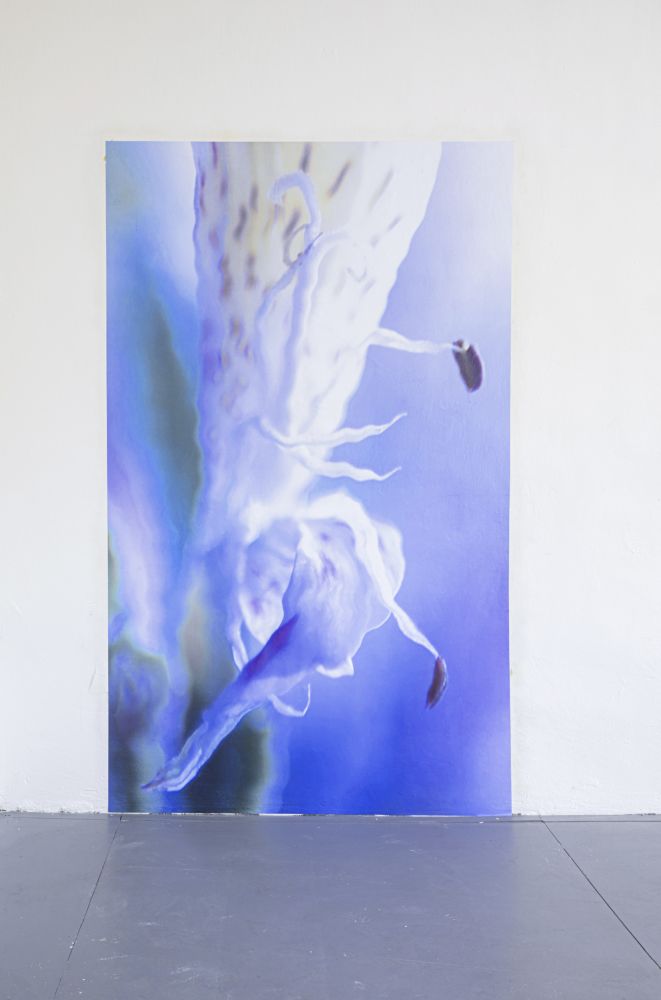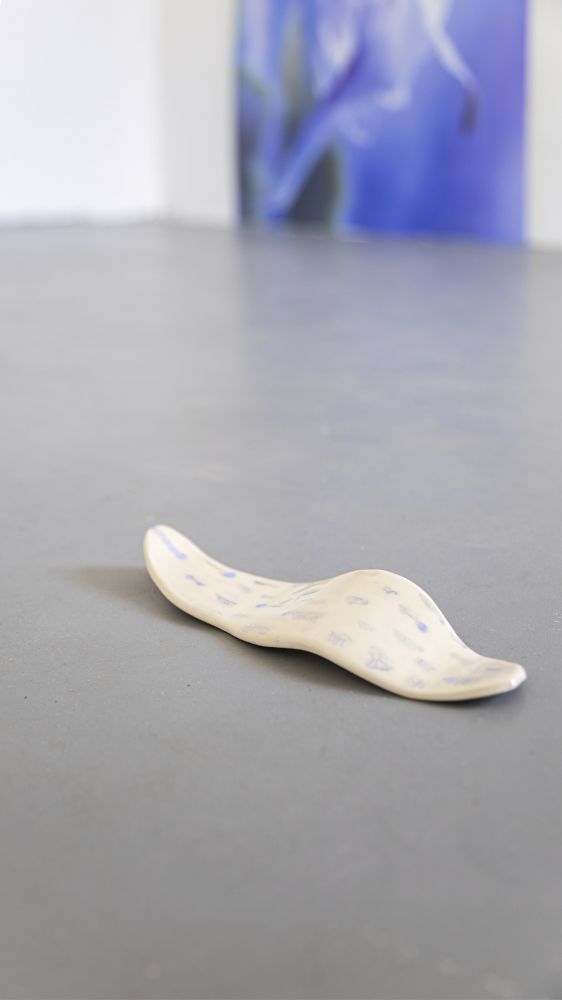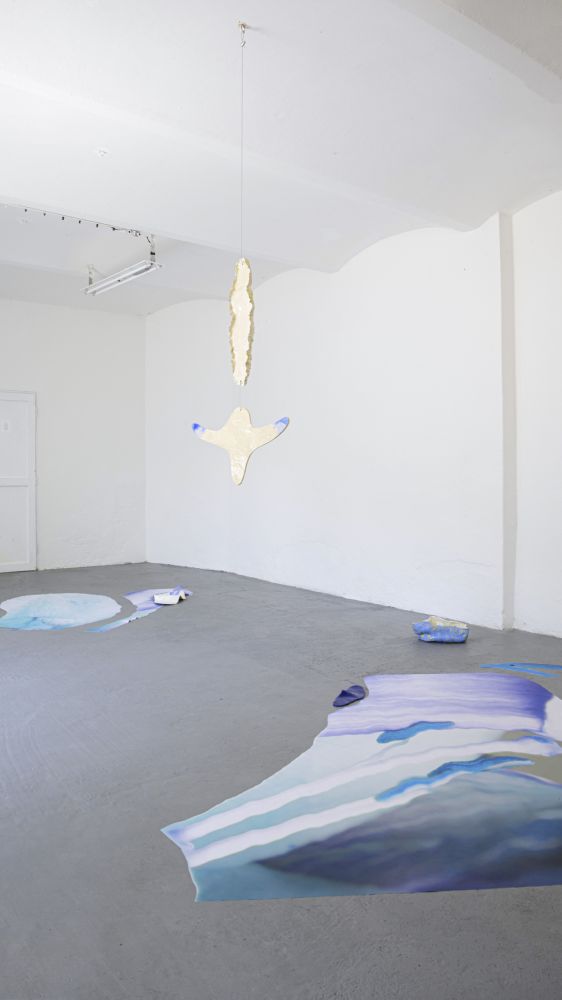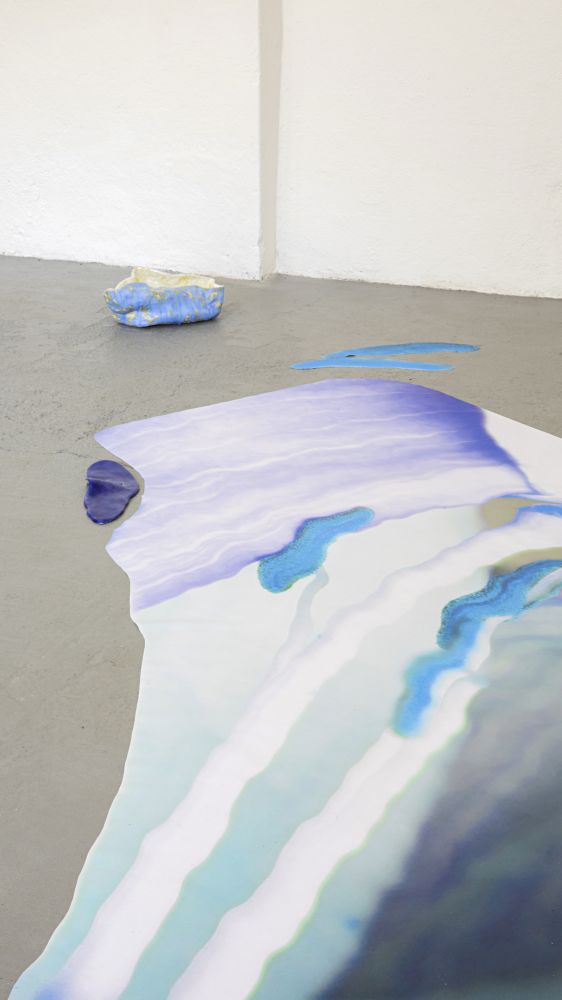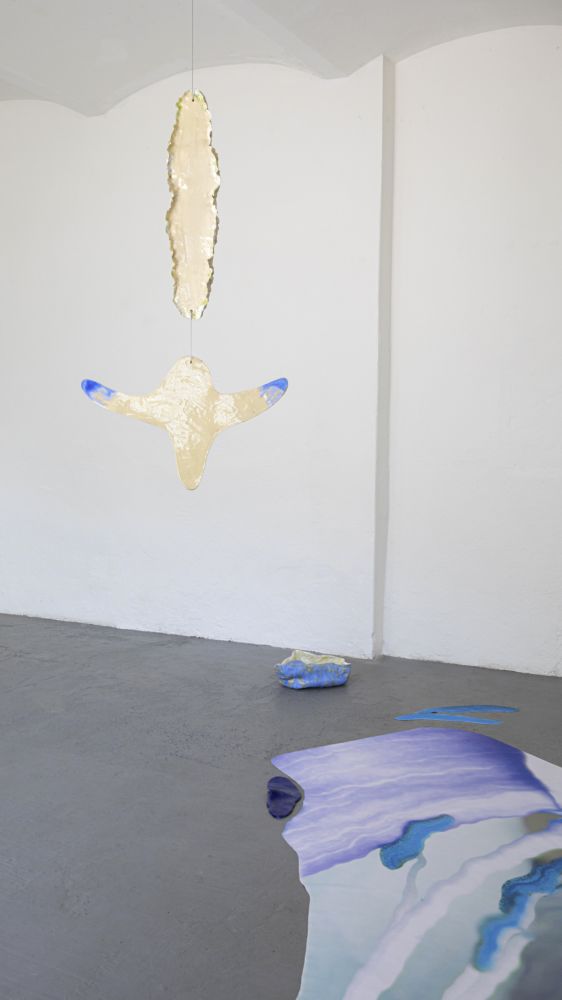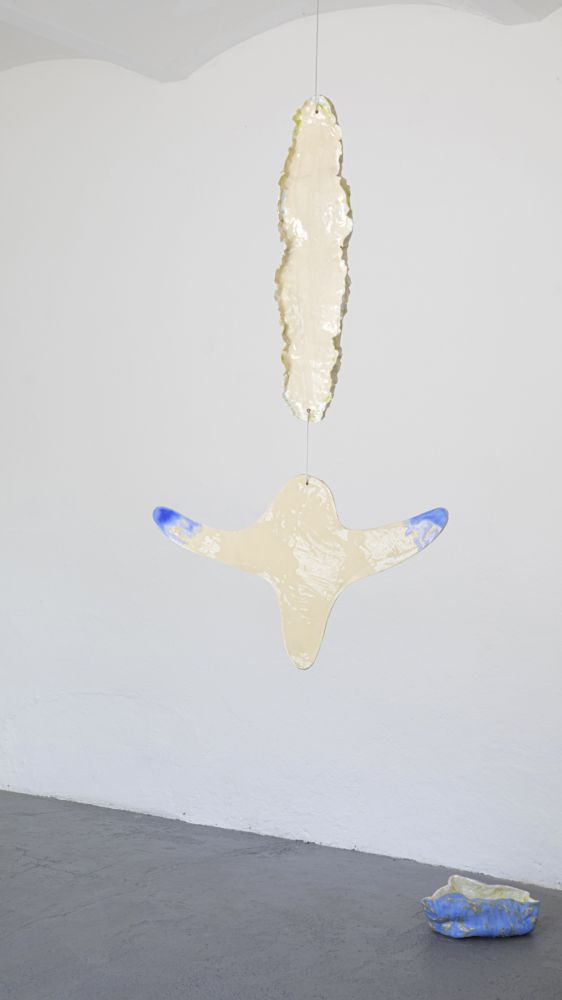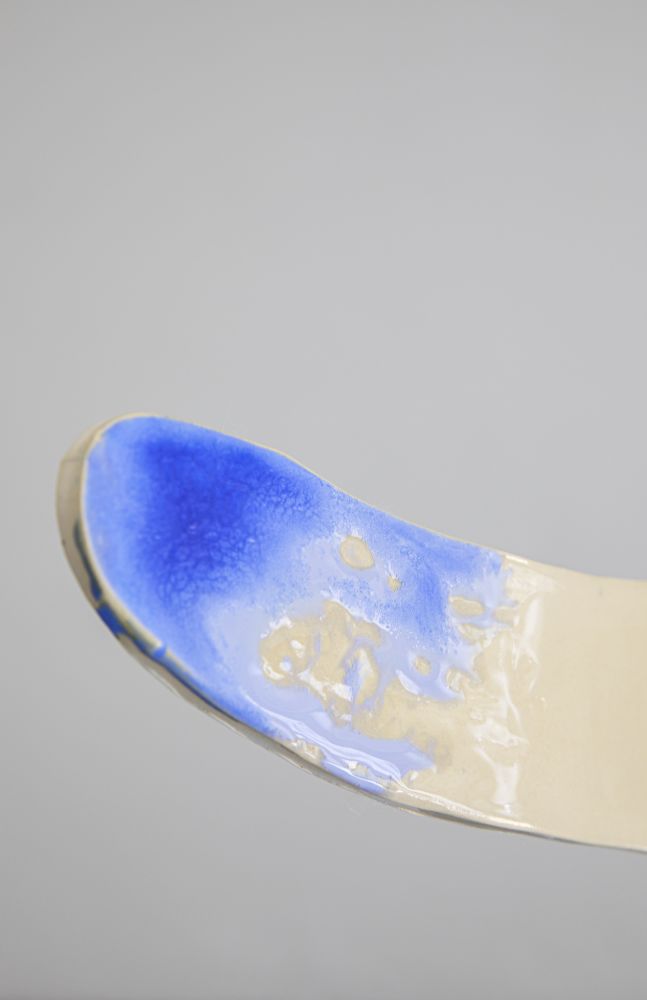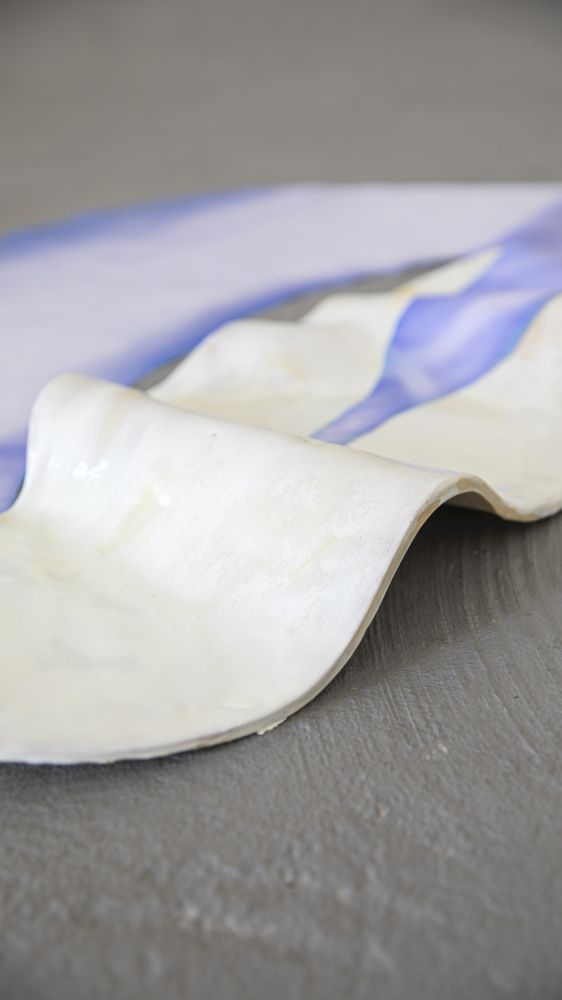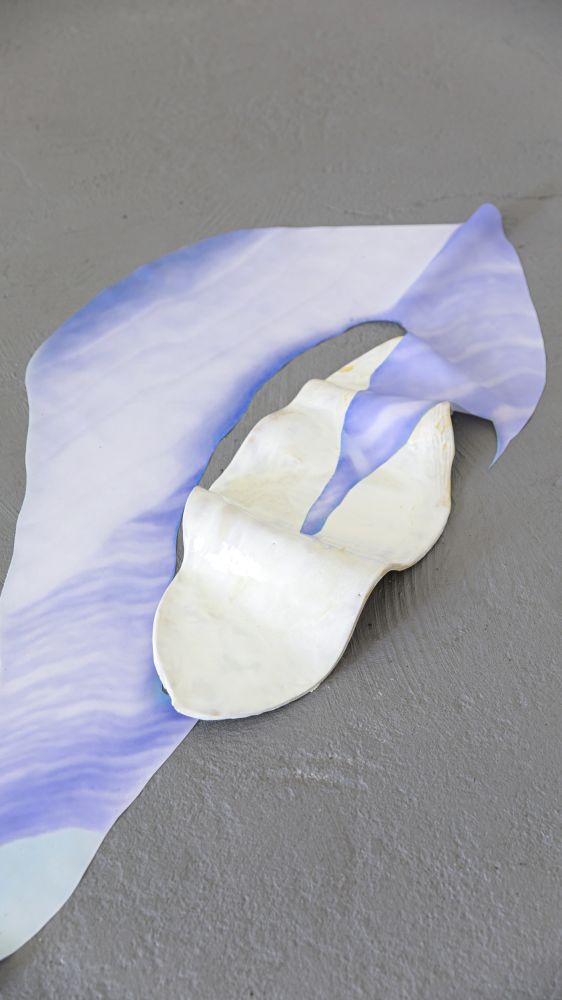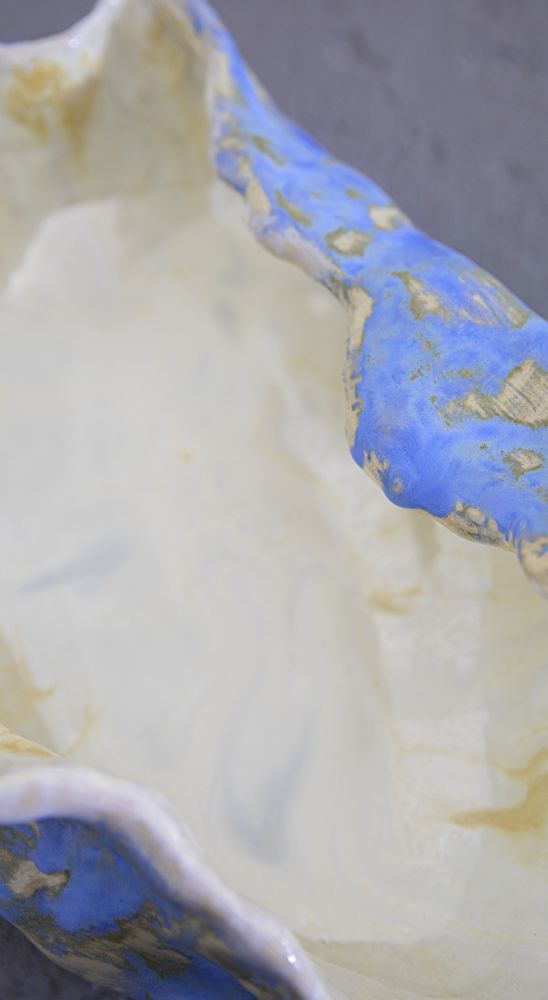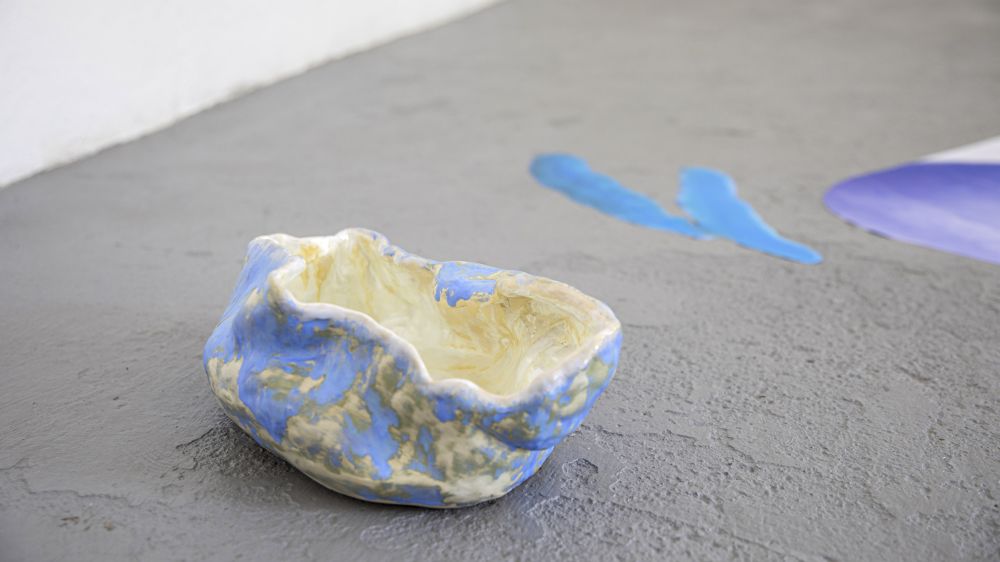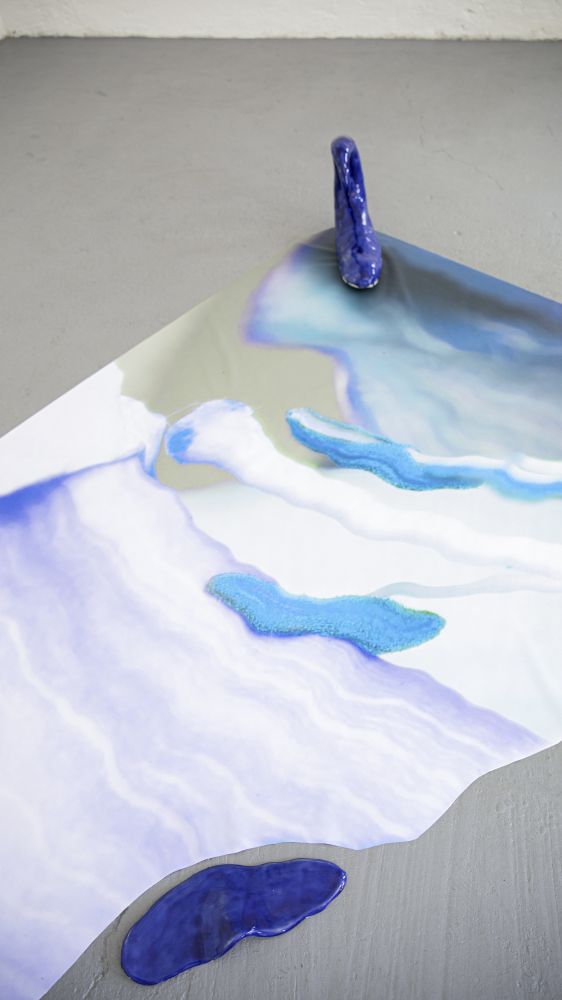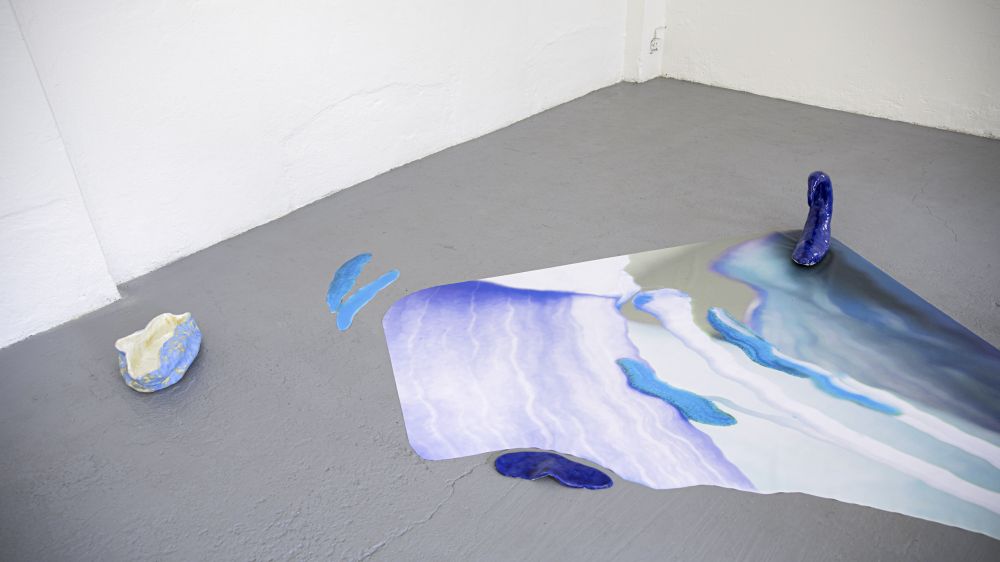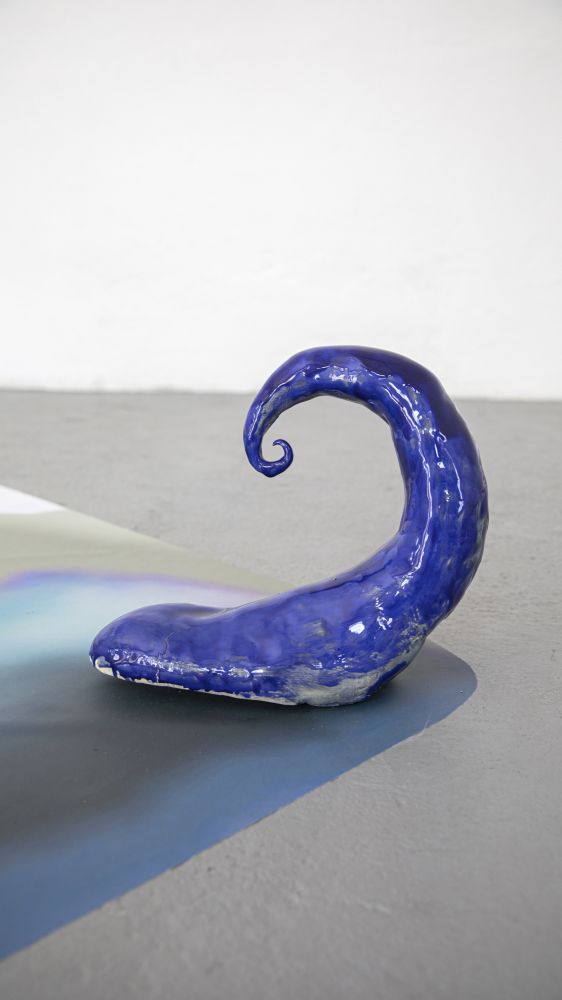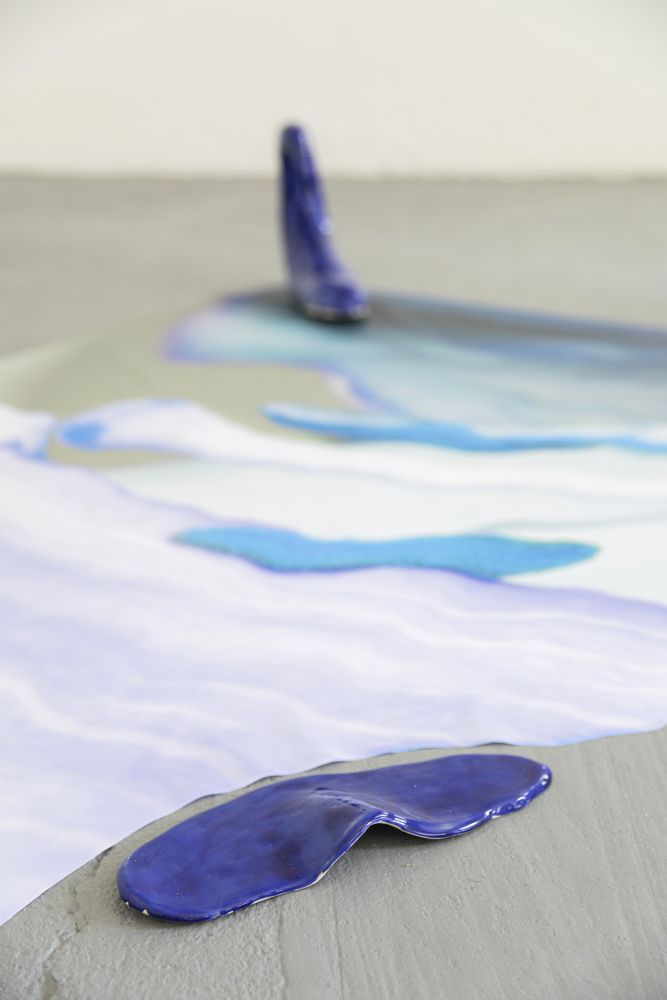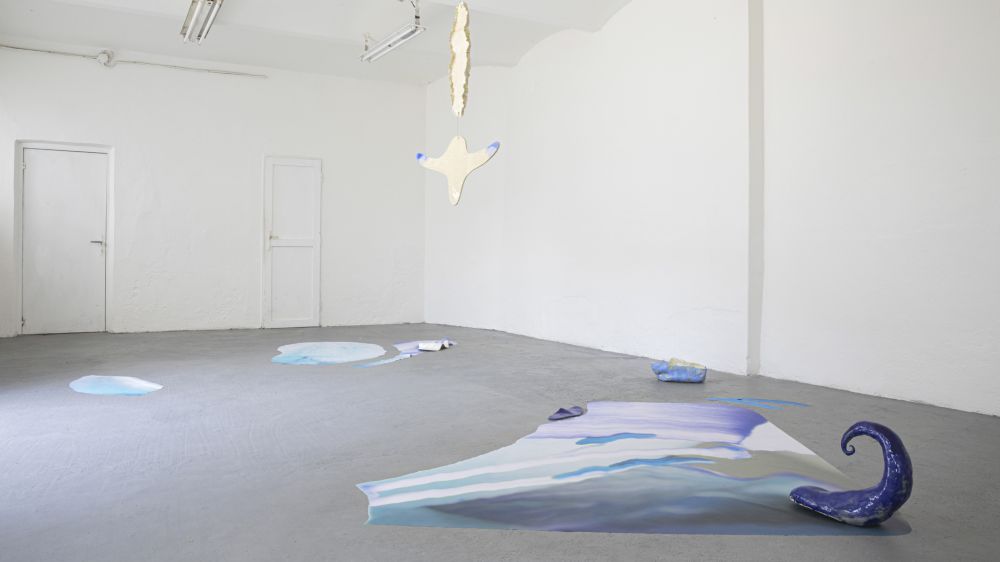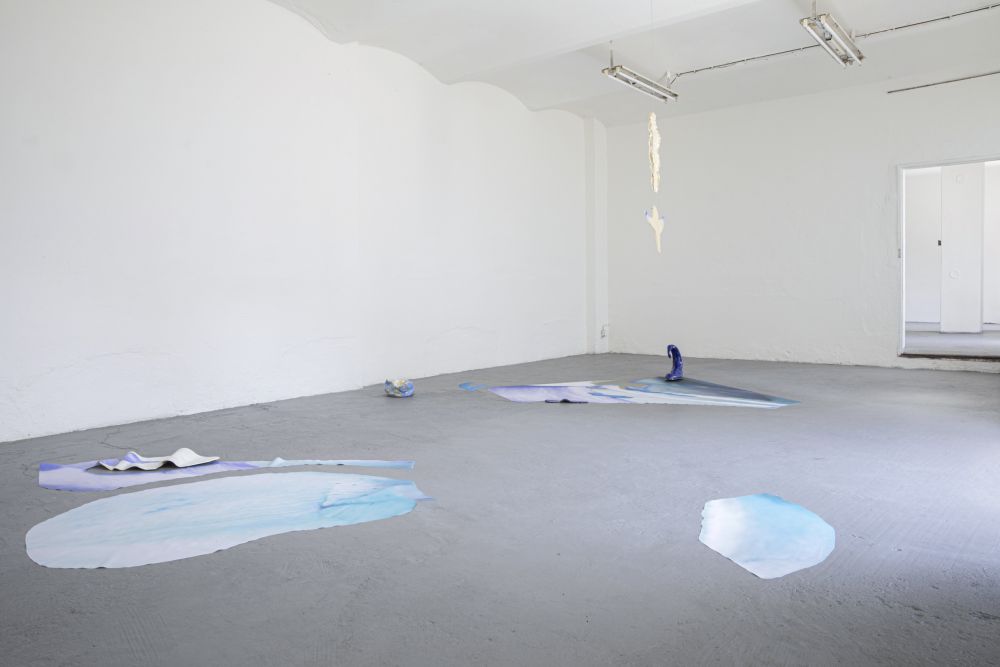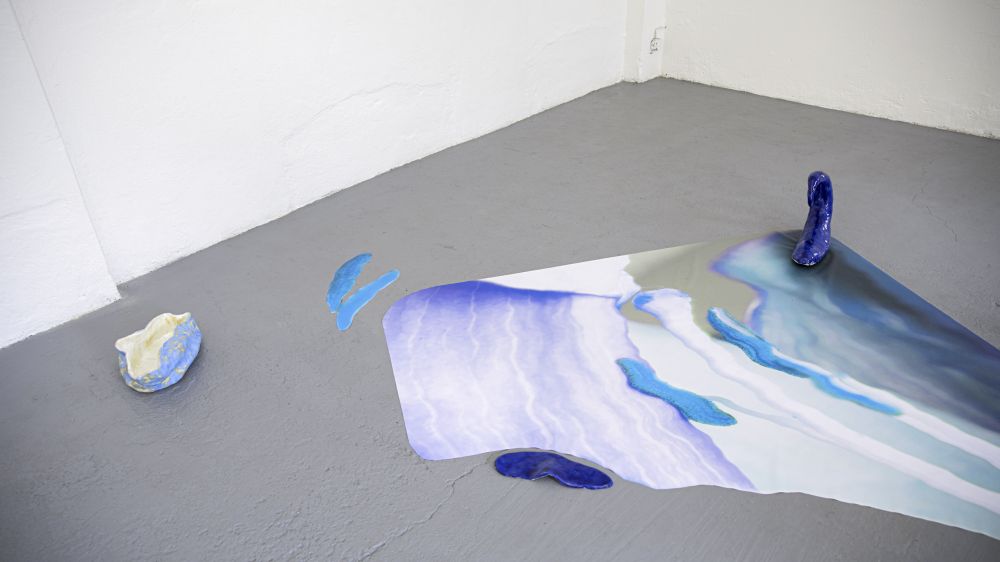Artists: Veronika Čechmánková & Nela Britaňáková
Exhibition title: Royal Blue Calla
Curator: Ján Gajdušek
Venue: Holešovická Šachta, Prague
Photos: Světlana Malinová
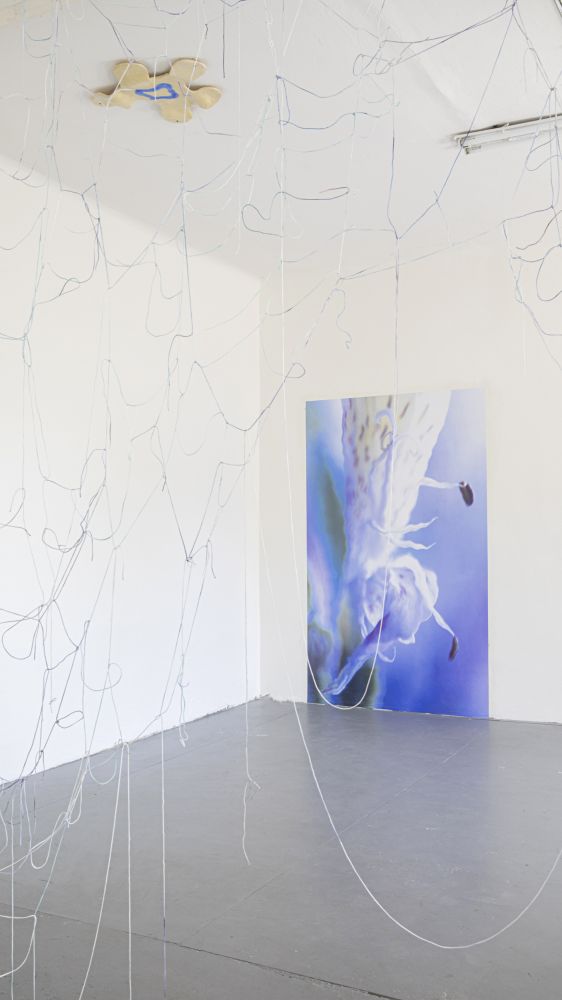
“The plain of poisonous blue – an unfathomable genetically modified meadow, is connected by its root system into one huge living organism.” The original calla flower, in Czech nomenclature named as Koroutnice africká, English calla lily, has been bred over the centuries into many subspecies, including genetically modified calla in a shade of deep royal blue. “However, the system is connected to a tangle of chrome tubes that pump a dark blue ink-like liquid into the root system.” The combination of calla and shade Royal Blue, which was developed in the 18th century for the dress of English Queen Charlotte, wife of King George III, has several color variants, the most traditional of which is dark, deep blue. “Calla tubers absorb it and are nourished and artificially modified by it into a non-native and alien organism resembling a huge hyperobject.” Over the years, however, the shade of royal blue was subject to the needs of fashion trends, and dark blue gradually faded more and more. “Thanks to their artificial nutrition, their flowers acquire a shade of poisonous blue, more reminiscent of digital renders of flowers than organic living matter.” Royal Blue now also exists as a web color within the X11 standard under the designation # 4169E1, with the traditional shade of royal blue, but this variant has little in common. “Blue calluses communicate with each other through the root system, but it is controlled by a modified nutrient solution and makes the plants act as a gigantic robotic system camouflaged in a robe of sea blue flowers.” In the fashion industry and the online world, therefore, today under one name Royal Blue there are two dominant shades of blue, which, however, are fundamentally different.
Veronika Čechmánková and Nela Britaňáková transfer the topic of genetic engineering, genetic mutations and man–made living organisms to a joint installation consisting of works in which they connect their closest media – ceramics and photography. Just as scientists work with mutations and artificial modifications of nature, the authors use as part of their objects and paintings floral motifs inspired by the genetically modified calla plant in the color of royal blue, which they decompose, connect, bend or otherwise change. These principles appear in various forms by which the authors transform the original motif into a number of new variants and modifications. The surface enters the space here and is absorbed back by it, as well as the mutual relations between the used media – natural transitions of color shades and surface structures, as well as mutual contact between individual objects.
Nela Britaňáková (* 1995) studied ceramics and porcelain at the Academy of Arts, Architecture and Design in Prague and continued at the Academy of Fine Arts in Prague in the sculpture studio, where she successfully continues her studies. In her work she blends free art and design, her objects are characterized by the fluidity of shapes and strong colors created by mixing shades of ceramic glazes. They are reminiscent of relics of consumer objects, which perhaps in ancient times were used by man, but their form irreversibly transformed them by the action of natural and mystical forces to uncertainty.
Veronika Čechmánková (* 1996) is a student in the intermedia studio at the FAMU Faculty of Photography. In his work, he mixes a conceptual and performative approach to video and photography, which connects with sculptural objects with the same importance. Her work consists of layering and mixing links, which together create a whole new perspective on deep-rooted archetypes and symbols. It selects visual and cultural elements from the past and examines their validity and the possibilities it plays out in the current context.
